- Products
- Solutions
- Services
- Resources
- Customer Success
- Company
- Sign In
- Contact Us

Digital Transformation enabler helping enterprises evolve by connecting technology
Take a look at upcoming webinars and special events
HokuApps news and media coverage
Be with the best. Solve real problems
Get in touch with our experts here
Explore our extensive collection of online resources here
Information and insight on transformation to the Digital Workplace
Quick Guides provide concise information on a variety of topics
Discover the essence of HokuApps’ products
Learn all about HokuApps’ cutting-edge enterprise mobility technology

Talking about the smartphone landscape, two obvious names that come up are— iOS and Android. While Android has a larger user base, Apple (iOS) products lead the way in revenue generation with in-app purchases and other monetized services. The user base for iOS is growing exponentially and currently, the number has surpassed the 700 million mark. HokuApps is an iPhone application development company which understands that iOS apps are subject to extra stringent App Store regulations, unlike their Android counterparts. Sticking to certain guidelines during the iOS app development process ensures that the output is aligned to the latest trends and consumer expectations.
Currently, there are 2.2 million applications in the Apple App Store and that number is growing at a steady rate. Such a figure is indicative of the number of similar apps being built. This may come across as a challenge to novice application developers. However, the large repository of applications also allows a scope for extensive market research. Going through existing similar applications can help you map the current trends in terms of features and technical requirements. Looking at user feedback can also reveal the dynamic demands and insights and what resonates well with the audience. A comprehensive market research simplifies the subsequent ideation process.
When done the right way, the ideation stage is capable of projecting the possible roadmap of the app’s complete development process. There are several points to consider cultivating a robust idea for your app. Some of these can be defined as the purpose of the build of an app, and some the necessary features. The ideation process is the first step towards developing an iOS application and hence, needs to be open to suggestions and iterations. Once you have the idea finalized, refine it and proceed towards the next steps.
To put in simple words, a wireframe is a blueprint. It does not necessarily explain the design, rather presents the most simplified visual concept of the app. One of the advantages of wireframing is the room for iterations. The concept enables the team to identify cost areas and possible challenges.

The UI/UX design can make or break an app. The design determines the ease of navigation within the app and defines the users’ overall experience. iOS app development needs adherence to specific guidelines. For example, Apple recommends an appropriate touch size of 44 pixels square. The design phase allows the team to get to the display features such as graphics, animation, and icons. The design is the building block of the seemingly complicated development process.
While design focuses on the implementation of the app features, software architecture planning occurs parallel and is aimed at ensuring stability and scalability of an app. A comprehensive software architecture planning needs to take into account the fluctuating market dynamics.
It includes both front-end and back-end development. The front-end team develops codes to implement the various design elements of the application. This includes caching and synchronizing database and development of wireframes and UI design. On the other hand, the back-end purely focuses on the functionality of the app. The complete development process is a balanced coordination between the two. The back-end process includes customization of user experience and system integration with third parties.
Developing the iOS app is only the first step. Publishing its app on the App Store requires abiding by stringent regulations. It needs to be noted that the iOS app review period can last up to 10-15 days. In order to successfully publish an app on the App Store, the developer has to run test case preparation, usability testing, and performance testing to ensure that the app performs as expected, once released. To improve the submission process, the App Store also enlists the key reasons considered, for rejecting an app.
It is crucial to be aware of user feedback. App developers need to be constantly aware and release regular updates to address issues encountered and notified. Updates also ensure that the app has the necessary support and is up to date.

The current market for applications demands quick development. App development companies are faced with the challenge of creating an adaptive development environment at a rapid pace. It has often been observed that the initial budget of a project is overshot, and so schedule. Adopting an iOS app development service like the Rapid Application Development platform can help you overcome these difficulties. Here’s a blog to know more about the benefits of iPhone application development for businesses.
A RAD platform allows a non-linear model for your app development process. This enables the team to involve users in the process and perform quick iterations based on feedback. There are various companies, like HokuApps, that offer RAD platform as a service. However, few provide the app with such high-quality and at 10X speed.
The HokuApps RAD platform follows a low code approach to app development while significantly reducing the idea-to-market time. This also helps in cutting down on costs since the RADP model permits the reuse of resources and identification of optimization requirements.
Developing an iOS app does take time and effort, but a well-planned and optimized process flow is instrumental in achieving the desired results.